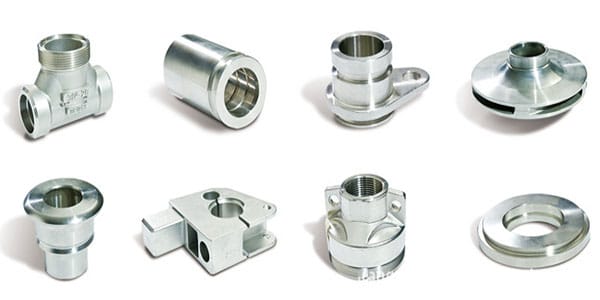Investment Casting VS Sand Casting
Not all castings are the same. Investment casting and sand casting are two different metal casting methods. Both investment casting and sand casting have their own advantages. So we can’t say which is better, just for different applications. This is an article about the comparison of these two processes. As a investment casting manufacturer and customer. Understanding the differences of Investment casting and sand casting.It can help you choose the best technology for your application.
Investment Casting
Investment casting is a precision casting process using lost wax method to make components in metal cast alloys. Investment casting manufacturers use a product wax pattern to make a mold. Then they dip the wax pattern into a refractory slurry. To made of materials like plaster of silica or sillimanite and silica to form the mold. After dipping the wax into the slurry, manufacturers heat the pattern to melt and remove the wax. After harden the slurry binders. They then pour molten metal into the mold and allow it to cool. The mold or pattern of investment casting is made by aluminum. Then dipping the tree assembly into refractory slurry to form a ceramic shell. Finally pouring molten metal into the shell by spruce gate and cooling for solid casting blanks.
Advantages and Disadvantages of Investment Casting
| Advantages of Investment casting | Disadvantages of Investment casting |
| Cast ferrous and non-ferrous materials | Expensive Cost than sand casting |
| Smooth surface finishes,reducing machining and finishing | Longer Lead time |
| Investment casting in thin walled parts with complex shapes | |
| Very accurate,Create products with precise dimensions even net shape |
Sand casting
Sand casting refers to a casting method for producing castings in a sand mold. Steel, iron and most non-ferrous alloy castings can be obtained by sand casting. Since the molding materials used for sand casting are cheap and easy to get. The molds are easy to manufacture, and can be adapted to single-piece production, batch production and mass production of castings. It has always been the basic process in foundry production.
Advantages and Disadvantages of Sand Casting
| Advantages of Sand Casting | Disadvantages of Sand Casting |
| Lower mold costs | Less accurate than other casting methods |
| To cast ferrous and non-ferrous materials | Difficult to cast components with predetermined weight and size specifications |
| The ability for large components | Rougher surface finish |
Differences of Investment Casting and Sand Casting
1-Design: In investment casting process,the design can be made almost any shape.investment casting design has extraordinary freedom to add intricate features and complex shapes. For sand casting parts,they usually have to be tapered (with draft angles) or shaped. It’s also a challenge for sand casting to make parts with internal voids or cavities.Sometimes, several cores may be needed.So sand casting design is limited by sand casting technology.
2-Materials: The investment casting raw material was to join the polyethylene material of paraffin wax, sodium silicate, silicon sol, whose costs are higher than foundry sand. Sand casting raw materials are clay sand or chemical self-hardening sand, the resources of the casting sand is rich and the price is cheap.
3-Casting Time: The investment casting mold process needs longer period.Sand casting and resin sand is low. The molding cycle is short and has high efficiency.
4-Appearance quality: The investment casting surface is higher than the general casting, usually ranging from Ra.3.2 ~ 12.5μm.The surface of the sand casting is easy to be caused by the sand inclusion, sand wash, clip sand, air hole and other casting defects.
5-Dimensional Tolerance:Investment castings have very high dimensional tolerance, normally could reach CT 4-6.Sand castings have lower dimensional tolerance, size accuracy for CT10 ~ 13, the wall thickness of sand castings is minimum of 3 to 5 mm.
6-Mass Production:The investment casting technology can ensure the consistency of the castings.But sand casting process is difficult to ensure the consistency of the castings. Unless by using moulding machines, automatic molding lines or shell molding process.
7- Products Range:In China, the investment casting is generally used to produce the steel castings. It is generally used to product small castings with unit weight under 20 kgs. Sand casting can be used for the production of cast iron and steel castings, and cast aluminum parts. The adaptability of the sand casting is very broad, small, large, simple, complex, single, large quantities can also be adopted.
We, as a Chinese investment casting company and foundry, has over 22 years of experience creating ISO-certified investment castings in its factories.We have more experience of different casting process.Let’s have more communication on your RFQ. To offer our best solutions on Investment Casting or Sand Casting.

